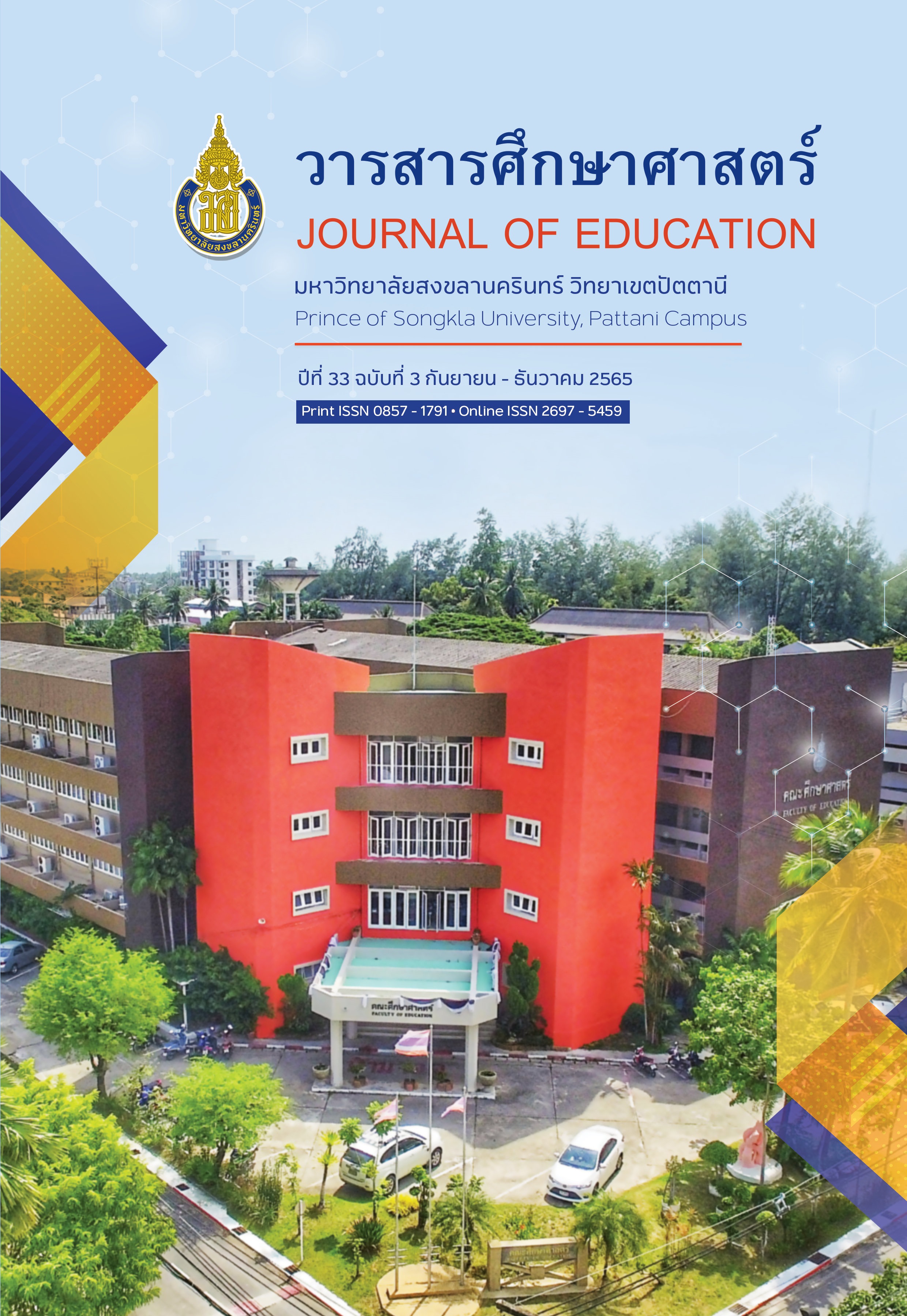เทคโนโลยีดิจิทัลสร้างสรรค์กับการจัดกิจกรรมศิลปะสำหรับเด็กปฐมวัย
Main Article Content
บทคัดย่อ
บทความวิชาการนี้มีวัตถุประสงค์เพื่อนำเสนอถึงการนำเทคโนโลยีมาประยุกต์ใช้กับการจัดการศึกษาปฐมวัยโดยการใช้เทคโนโลยีดิจิทัล ได้แก่ โปรแกรมประยุกต์หรือแอปพลิเคชันผ่านการใช้งานบนอุปกรณ์คอมพิวเตอร์ แท็บเล็ต หรือสมาร์ตโฟน มาบูรณาการกับการจัดกิจกรรมศิลปะสำหรับเด็กปฐมวัย ซึ่งการนำเทคโนโลยีดิจิทัลเข้ามาใช้ในการกิจกรรมศิลปะนั้นมีส่วนช่วยในการกระตุ้นให้เด็กเกิดความกระตือรือร้น
ความสนใจ รวมถึงเป็นการขยายขอบเขตการเรียนรู้ของเด็ก เนื่องจากเทคโนโลยีดิจิทัลถือเป็นเครื่องมือในกระบวนการสร้างสรรค์ผลงานที่จะช่วยให้เด็กได้พัฒนาและขยายศักยภาพของตนเองในด้านการสร้างสรรค์งานศิลปะได้มากยิ่งขึ้น อีกทั้งยังทำให้เด็กได้ถ่ายทอดเรื่องราวและจินตนาการได้อย่างเป็นรูปธรรม และสามารถเรียนรู้จากการทดลองสร้างสรรค์ผลงานรูปแบบใหม่ ๆ อีกด้วย บทความฉบับนี้ผู้เขียนจึงได้ศึกษาและเรียบเรียงข้อมูล เพื่อเป็นแนวทางสำหรับครูผู้สอนในการจัดกิจกรรมศิลปะที่บูรณาการเทคโนโลยีดิจิทัลอย่างสร้างสรรค์ที่จะสามารถพัฒนาเด็กปฐมวัยแบบองค์รวม ทั้งด้านร่างกาย สติปัญญา สังคม อารมณ์และจิตใจ อันเป็นพื้นฐานสำคัญในการพัฒนาเด็กปฐมวัยให้เป็นบุคคลที่มีความพร้อมที่จะก้าวเข้าสู่สังคมแห่งการเรียนรู้ในศตวรรษที่ 21
Article Details

อนุญาตภายใต้เงื่อนไข Creative Commons Attribution-NonCommercial 4.0 International License.
เอกสารอ้างอิง
American Academy of Pediatrics Council on Communications and Media. (2011). Policy statement: Media use by children younger than 2 years. Pediatrics, 128(5), 1040–1045. doi: 10.1542/peds.2011-1753.
Charoenpanichkul, C. (1990). Developing Children through Art. Bangkok: Plan Publishing. [in Thai]
Columbus Museum of Art. (2021, March 15). Aminah’s World. From http://www.aminahsworld.org
Iamsen, S., Pinchinda, P., Jitsupa, J., & Keesookpun, B. (2021) Guidelines of Online Learning for University Learners’ Learning Happiness. Journal of Education, Prince of Songkla University, Pattani Campus. 32(3), 1-16. [in Thai]
Margo Cunningham. (2020). The K-12 Art Room, Why, Where, And How To Make It Happen. From https://amt-lab.org/blog/2020/7/technology-in-the-k-12-art-room-why-where-and-how-to-make-it-happen
Maxey Fagan, L. (2015). Elementary School Teachers' Perception of Art Integration to Improve Student Learning. Walden University.
McManis, L. D. & Gunnewig, S. B. (2012). Finding the education in education technology with early learners. Young Children.
Ministry of Education. (2003). National Education Act B.E. 2542 (1999) and Amendments (Second National Education Act B.E. 2545 (2002). Bangkok: The teachers council of Thailand. [in Thai]
Ministry of Education. (2017). Early Childhood Curriculum 2560. Agricultural Cooperative Printing Demonstrations of Thai Ltd. [in Thai]
Partnership for 21st Century Learning. (2019). Framework for 21st Century Learning. https://www.battelleforkids.org/networks/p21/frameworks-resources.
Preschool Education Association of Thailand. (2022, February 26). Using Technology Media for Early childhood. From https://preschool.or.th/content/documents/technology.pdf
Rangsinan, A. (1989). Creative Thinking. Bangkok: Khaofang Publishing. [in Thai]
Suwannasri, N. & Janthon, U. (2016). Learning Media and Educational Technology. Faculty of Education, Suan Dusit University. [in Thai]
Swick, K. J. (1989). Appropriate Uses of Computers with Young Children. Educational Technology, 29(1), 7–13. From http://www.jstor.org/stable/44425984
Tangcharoen, W. (1983). Art education. Bangkok: Wimolart. [in Thai]
The Art of Education University. (2019). 10 Ways Technology Can Enhance the Art Room. https://theartofeducation.edu/2019/03/08/10-ways-technology-can-enhance-the-art-room/Can enhance-the-art-room/.
Tongseeda, A. (2022, Febuary 26). Art Activities a tool for Child Development. From https://bsru.net/กิจกรรมศิลปะ-เครื่องมือ/. [in Thai]
UNESCO. (2010). Recognizing the potential of ICT in early childhood education.
Walden University. (2022). 5 Trends That Are Transforming Early Childhood Education. from https://www.waldenu.edu/programs/education/resource/five-trends-are-Transforming-early-childhood-education.


